Shrimp come in a surprisingly huge range of sizes, varieties, and preparations—fresh and frozen, wild and farmed, jumbo and teeny tiny. It can be hard to know which kind to choose, but this guide on how to buy shrimp, as well as how to store it, thaw it, prepare it, and cook it will make you a Bubba Gump level expert in no time.
Americans love shrimp. It doesn’t take a stream of endless shrimp extravaganza commercials to figure that one out. They are our seafood of choice, with per capita consumption far outpacing the next runner up, salmon. Battered and fried, dredged in cocktail sauce, or grilled on the barbecue, they are the low-fuss, crowd-pleasing seafood option that feels special without busting the bank.
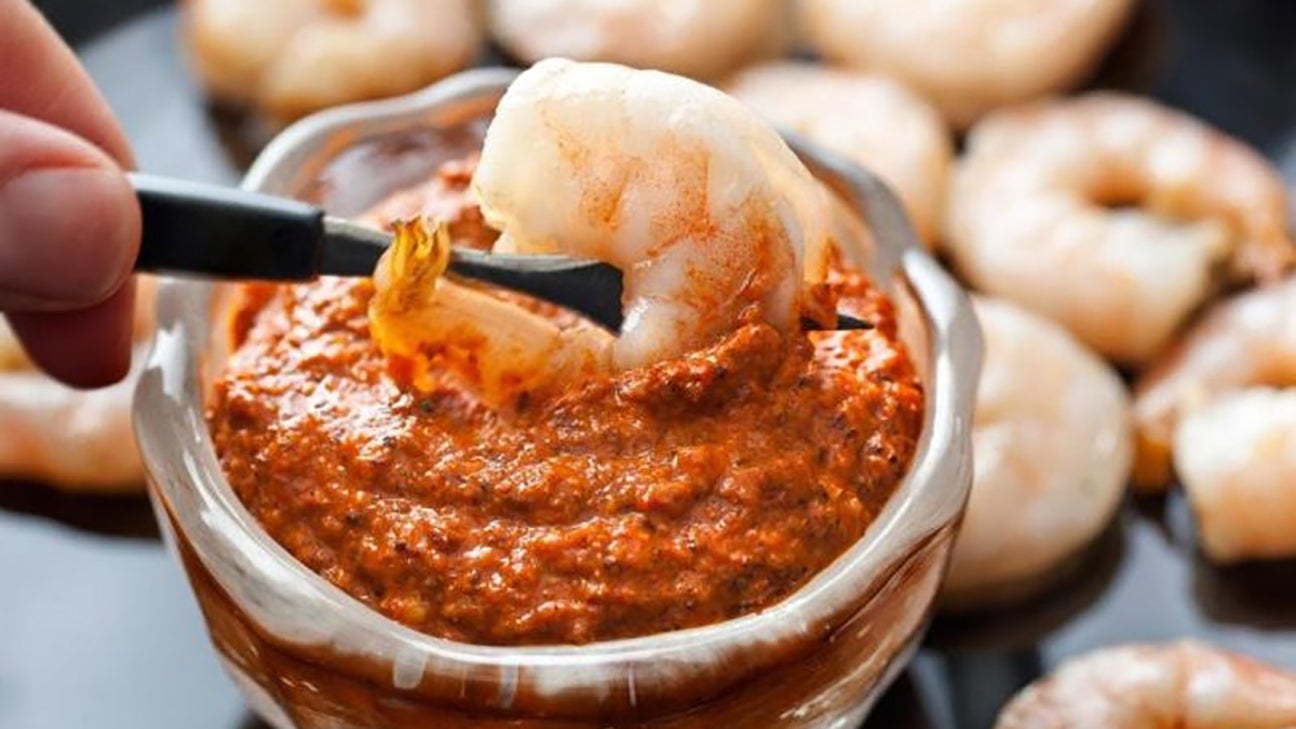
Our love affair with these crustaceans, however, means that the shrimp industry relies heavily on farming to keep up with demand. As you might expect, some farms’ practices are less savory than others. Plus, the dilemma of which shrimp is the best shrimp doesn’t stop at wild-caught versus farmed: when shopping for them at the store, you might find yourself wondering whether to go for shell-on or shell-off, fresh or frozen, small, large, or jumbo (and hey, isn’t jumbo shrimp an oxymoron)?
While the number of shrimp options out there may seem as wide as the sea is deep, there are a few basics to know that will make you smarter at the seafood counter. So make like Bubba from “Forrest Gump” and get the low down with our shrimp 101:
There’s a Type of Shrimp for Every Occasion
The shrimp family consists of thousands of different species, but only a small portion of these are widely consumed. Although they can be found throughout the world’s oceans, the majority sold for consumption in the U.S. are farmed, either domestically or in one of a handful of countries in South America, Central America, and Southern Asia that dominate the trade. The rest are wild-caught from the areas just off our coasts.
If you’re lucky and live near the shore, you might have access to an array of local species. These seven, however, are the ones you’re most likely to see at your average grocery store:
Brown Gulf Shrimp
These are your all-purpose variety, well-suited for stews, curries, stir fries, and more. Most wild-caught brown shrimp hail from the Gulf of Mexico, although they can also be found off the Atlantic coast up to North Carolina. Grayish-brown in color, they tend to be small to medium-sized, with firm, flavorful meat.
White Gulf Shrimp
Wild white shrimp are also abundant in the waters off the east and southeastern U.S., and can be found in close proximity to their brown counterparts. They are distinguished by their larger size, smoother shell, and pale grey or bluish color. Prized for their mild, tender, and fleshy meat, they readily absorb seasoning. Another excellent choice for general use, they are especially suited for shrimp boils or grilling, where that extra heft really counts.
Pink Gulf Shrimp or Key West Pink Shrimp
Another eastern variety, with high concentrations off the coast of Florida. Distinguished by their pinkish-gray shell and a dark spot halfway down the tail, they are small to medium sized. Known for their distinctive sweet and briny flavor, they are a favorite for simple preparations such as shrimp cocktails or baskets of peel and eat shrimp.
Rock Shrimp
A chef-y favorite, rock shrimp, which are found a bit farther offshore in the southeastern U.S., have caught on in popularity in recent years. Distinguished by their hard outer shell, they have a full, lobster-like taste and texture.
Northern Pink Shrimp
Found in the cool waters off both the northeastern and northwestern coasts, northern pink shrimp are small (about 50 or more per pound), but they pack in loads of sweet flavor. These are ideal for shrimp-based salads.
Argentinian Pink Shrimp
A more recent contender in American seafood cases, these pink, as the name suggests, are caught off the coast of Argentina, and are a pink color even when raw. This can make judging doneness by color a bit tricky, but the sweet, tender meat, often compared favorably to lobster (but way cheaper) is worth it. Try them in tacos and other simple preparations like shrimp scampi.
Tiger Shrimp or Tiger Prawns
Tiger shrimp are native to the Indian Ocean and the Asian side of the Pacific, although the majority sold for consumption are farmed. Distinguished by the dark stripes that run across their shells, they tend to be medium to large in size, and some specimens have even been known to reach well beyond a foot in length. These are great for grilling.
Prawns vs Shrimp
It should be noted that in the U.S., “shrimp” is used to refer to most edible species, from the smallest to the very large, although you might see the word “prawn” used to describe the biggest ones. In the U.K., the word “shrimp” tends to be reserved just for the smallest specimens, while “prawn” is more common in general use. Langoustines, although commonly referred to as scampi or Dublin Bay prawns, are actually a part of the lobster family.
Size Matters
Depending on your recipe, you may want to go for a larger or a smaller shrimp. Categories like small, medium, or large aren’t standardized, but you can go off the by the pound count, which any seller worth their salt will provide. You’ll often see a ballpark number, annotated with a slash. For example, 26/30 means that there are 26 to 30 shrimp in each pound. The largest shrimp may be marked with a “U” for “under”—for example, U10 shrimp will be 10 or less per pound. Once you get above 50 per pound, you’re dealing with some pretty small specimens. At the other end, once you start to go below 20, things get pretty colossal.
Go for Frozen
Fun fact: virtually all shrimp are frozen soon after they are captured. Those “fresh” shrimp in the store? They are previously frozen and thawed.
Shrimp (and all crustaceans) have enzymes in their liver that begin attacking the flesh as soon as the animal is killed, turning it to mush. This process is partly mitigated by removing the upper torso and head (most shrimp sold for consumption is actually just the tail), and is why head-on shrimp spoils especially fast. But the only way to fully minimize spoilage due to enzymes, bacteria, and oxidation is by freezing them completely. Unless you can get freshly caught shrimp (lucky you), you’re better off buying them from the freezer case, since as soon as they defrost, they begin to deteriorate again.
Watch Out for This Ingredient
If you’ve noticed that your shrimp has an odd texture even after following instructions for cooking it perfectly and/or that it still seems semi-translucent even after turning white, it’s probably because of sodium tripolyphosphate or sodium bisulfite. These additives are often used to prevent shrimp shells from discoloring, which in itself is not dangerous at all, as well as to make them seem larger than they really are (or “retain moisture” as packaging usually claims, but it really means they absorb water to plump them up, which adversely affects their texture when cooked).
Melissa Clark breaks it down in this piece. Unfortunately, it can be difficult to find frozen shrimp without sodium tripolyphosphate—and when you do, they will be more expensive (but you’ll actually be getting what you pay for, rather than sub-par shrimp that’s been inflated with extra water weight). Since even “fresh” shrimp at the seafood counter was likely previously frozen, it may also have been treated and you should ask if you’re concerned.
How to Thaw Shrimp
Let them thaw in the fridge overnight (preferably in a colander set over a large bowl), or quick thaw in a bowl of cold water about 15 minutes ahead of when you plan on using them. Never re-freeze shrimp.
How to Store Shrimp
If you buy fresh shrimp, use them ASAP and in the meanwhile, store them like so: Open the bag and place a paper towel over the top, place the bag on a bowl of ice, and store in the coldest part of your fridge. The shrimp should be okay to use for up to two days.
Frozen shrimp should not be allowed to thaw between buying and storing. If they didn’t already come in an air-tight bag, transfer them to one, leaving about 1/4 inch of space at the top, and keep in the freezer for three to six months.
How to Tell if Shrimp Are Bad
Whether you’re dealing with fresh or defrosted shrimp, make sure that the flesh is firm (it will have some give, but should not be totally mushy) and that there aren’t any noticeable “off” odors. While a slight iodine smell is normal, especially with brown shrimp, there shouldn’t be anything particularly fishy or ammonia-like going on—that’s a sign that your catch is well beyond its peak.
Should You Buy Wild or Farmed Shrimp?
If you’re conscious about avoiding antibiotics and other substances used to maintain farmed seafood stocks, it would seem logical to go for wild-caught shrimp. But in the wild, shrimp inhabit the bottom floor of their habitats. It’s necessary to use large nets to catch them in significant numbers, and these nets tend to pick up a lot of bycatch. This method can produce significant waste and be disruptive to the marine ecosystem.
Farmed shrimp, on the other hand, are hit or miss, depending on the methods used to raise them. Laws regarding the use of antibiotics and chemicals vary widely from country to country, although the U.S. has pretty comprehensive regulations. Additionally, inland shrimp farms are generally set up with circulation systems that can handle waste, whereas coastal operations tend to deal with waste simply by dumping it back into the environment.
There is also the issue of human rights abuse to consider. Shrimp that comes from certain places (like Thailand) may have been produced using forced labor. Currently, there is a Seafood Slavery Risk Tool 2.0 in private beta mode; you can sign up to be alerted when the public beta goes live.
Meanwhile, and in the matter of all things seafood, it’s best to consult with organizations such as the Monterey Bay Aquarium Seafood Watch. Their guides make recommendations regarding the sustainability of different fishing and seafood farming methods, and are updated regularly. Here’s their Shrimp Overview.
For the Best Flavor, Buy Shell-On and Vein-In
If you’ve ever had shrimp cooked in the shell, you’ll know that the outer layer locks in all of the meat’s fullest flavors. Even if you don’t plan on cooking or eating them that way, you should still seek out shrimp that come with the shell on because it acts as a barrier against spoilage and oxidation, keeping the meat firm and tasty.
Plus, shelled shrimp is generally more expensive, and there’s a higher likelihood that its been mangled or mishandled somewhere along the line.
For the same reasons, you should also buy shrimp with the vein in and remove it on your own. Yes, deveining (that’s taking out the intestinal tract, which can be filled with sand and debris) is an extra step, but the rewards pay off in a better-tasting product.
The more intact the shrimp, the less likely it’s been treated with sodium tripolyphosphate too (see “Watch Out for This Ingredient” above for more info on that additive).
How to Peel and Devein Shrimp
To remove the shell from fresh or defrosted shrimp, just slide your thumb in where the legs are to loosen it, then peel it away, leaving the tail on, if you prefer, or gently pinching it off.
To devein, simply make a shallow slit down the back of the shrimp with a paring knife and remove the dark tube inside. See? Easy peasy.
If you want to remove the vein but keep the shells on (say, if you’re grilling the shrimp), just use kitchen shears to slit the shell down the back and a sharp paring knife to lift out the vein.
After deveining, rinse the shrimp again (sometimes a little grit gets on the meat during the cleaning process) and pat dry before you use them in your recipe.
Save Your Shells!
Since you’re buying shrimp in the shell, save them for an easy shrimp stock; it only takes a few extra minutes, and you can stash the stock in the freezer if you don’t need it right away:
It’s not just for Cajun cooking, either. This stock is perfect for seafood soups, risotto, paella, and anything else you’d like to infuse with more oceanic flavor.
How to Cook Shrimp: Recipes
Now all that’s left to do is get cooking! Despite their diminutive name, shrimp have a domineering presence across cuisines and take well to a wide range of flavors and accompaniments. Here are some of our favorites, covering a wide range of cooking processes (though don’t forget about steaming shrimp and frying shrimp either):
Spicy Shrimp and Grits
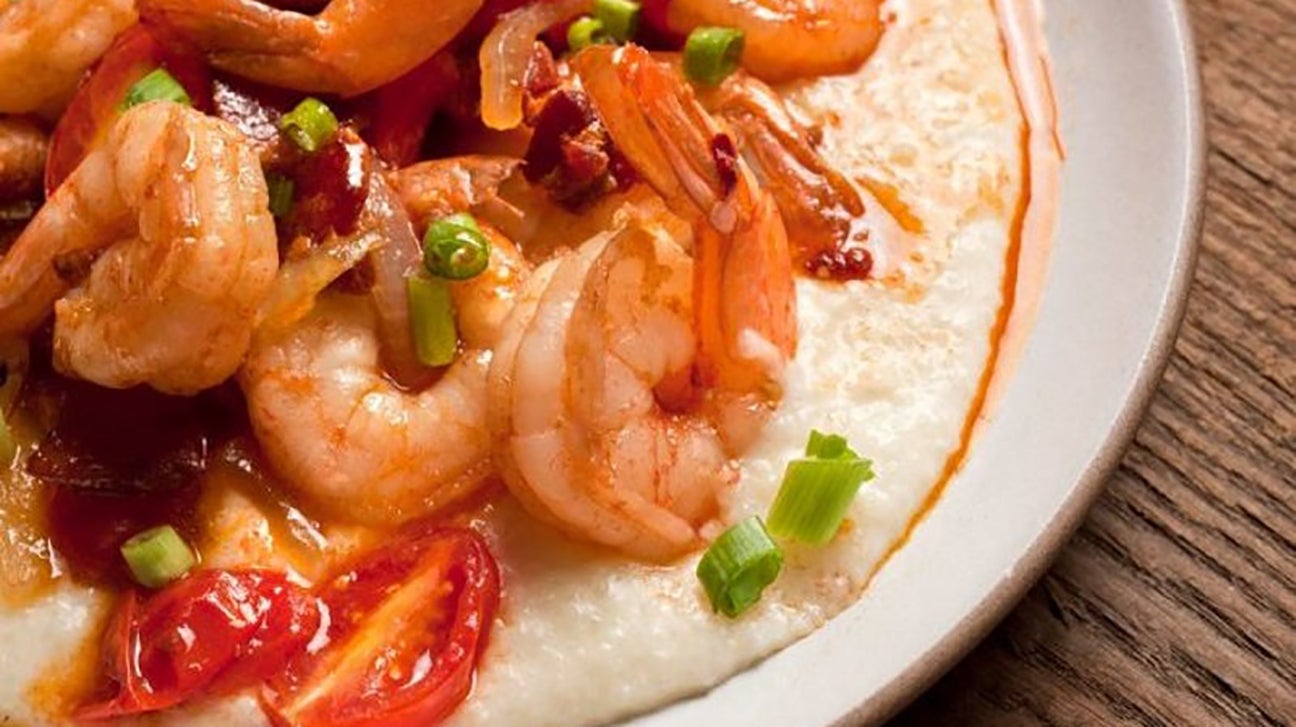
Shrimp and grits are a classic combo, but there are countless variations on the pair. This one spices up the seafood with some chipotle and red pepper flakes, and enriches the grits with white cheddar. Get our Spicy Shrimp and Grits recipe.
Shrimp Salad
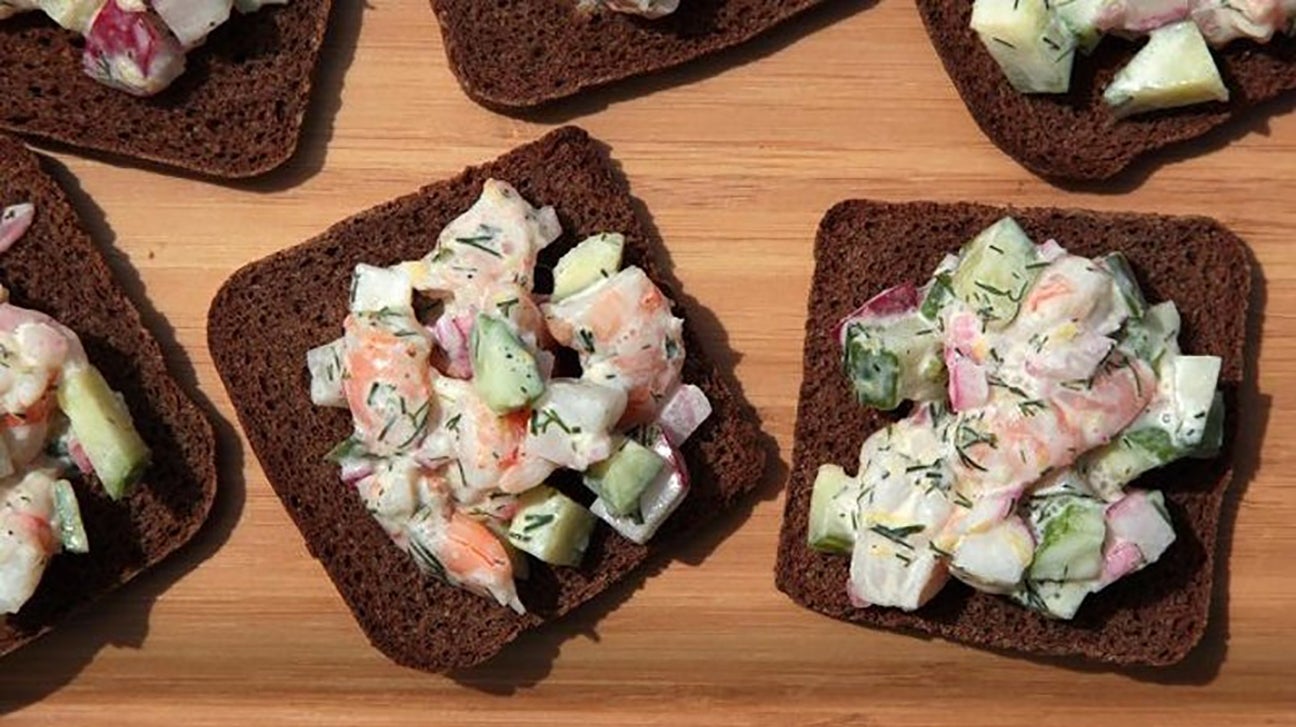
A creamy shrimp salad sandwich is always a welcome lunch, open-faced or otherwise—and it’s just as good scooped up with crackers or spooned over greens. Our Shrimp Salad recipe uses crème fraîche instead of mayo, but it’s endlessly adaptable.
Grilled Shrimp Tacos
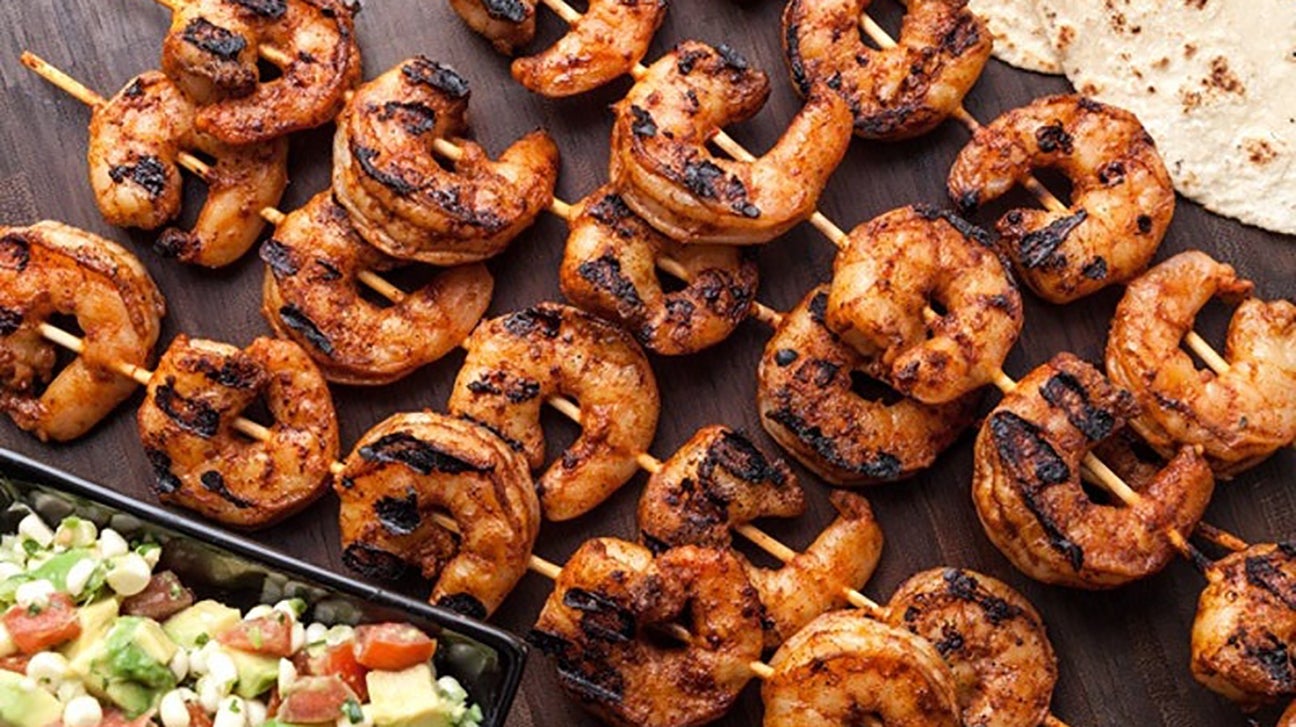
You can grill shrimp shell-on or shell-off, threaded onto skewers or in a grill basket. Here, we skewer them after a quick spice rub, quickly char them on the coals, and then fold them into tacos with a corn-avocado salsa. Get our Grilled Shrimp Tacos recipe, or go Greek with our Shrimp and Feta Taco recipe. (And since it is the season, try our Grilled Shrimp Boil Skewer recipe and our Pineapple Shrimp Skewer recipe too.)
Sesame Shrimp Skewers
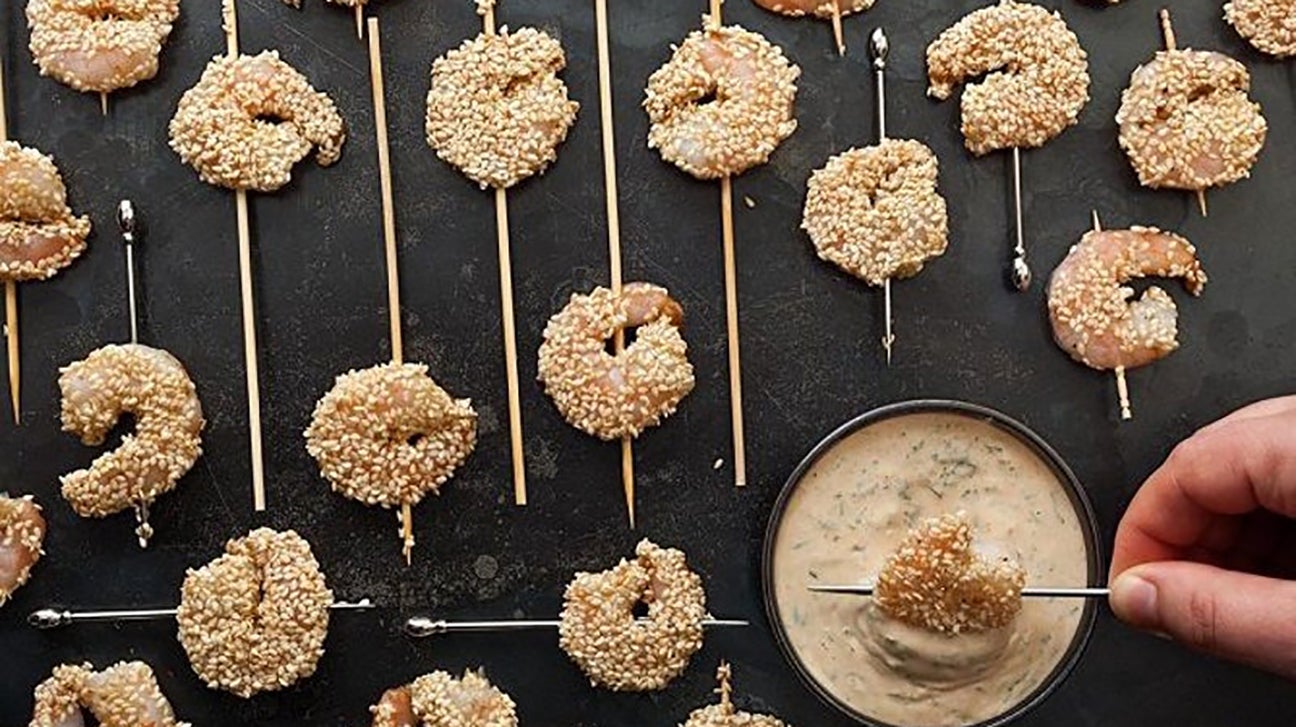
Skewering shrimp before baking or roasting in the oven is also a neat party trick. You can wrap them in prosciutto first, or coat them with sesame seeds (in which case, they’re great paired with cilantro-lime dipping sauce). Get our Sesame Shrimp Skewer recipe.
Shrimp Ceviche
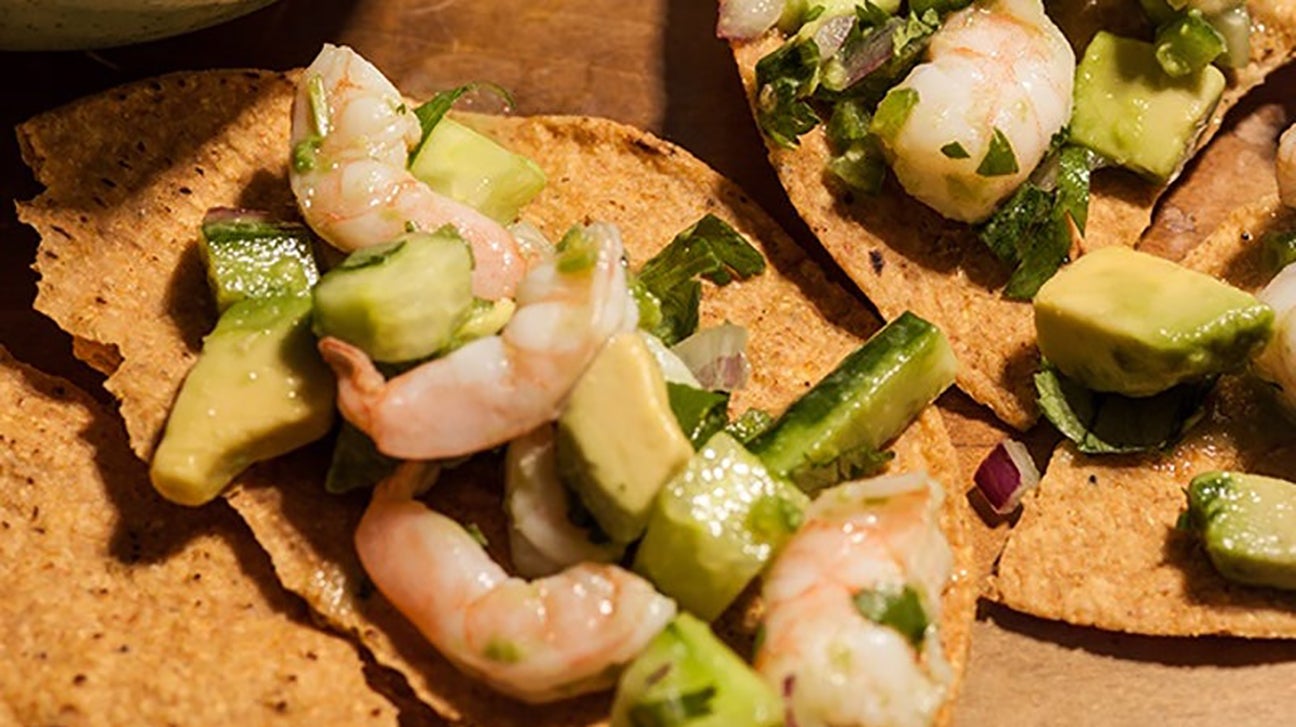
Can’t stand the heat? “Cook” your shrimp with citrus juice instead. Actually, we do briefly poach them first, then flavor them with lemon and lime juice, plus onion and serrano chile. Cilantro, avocado, and cucumber round things out. Get our Shrimp Ceviche recipe.
Easy Shrimp Pho
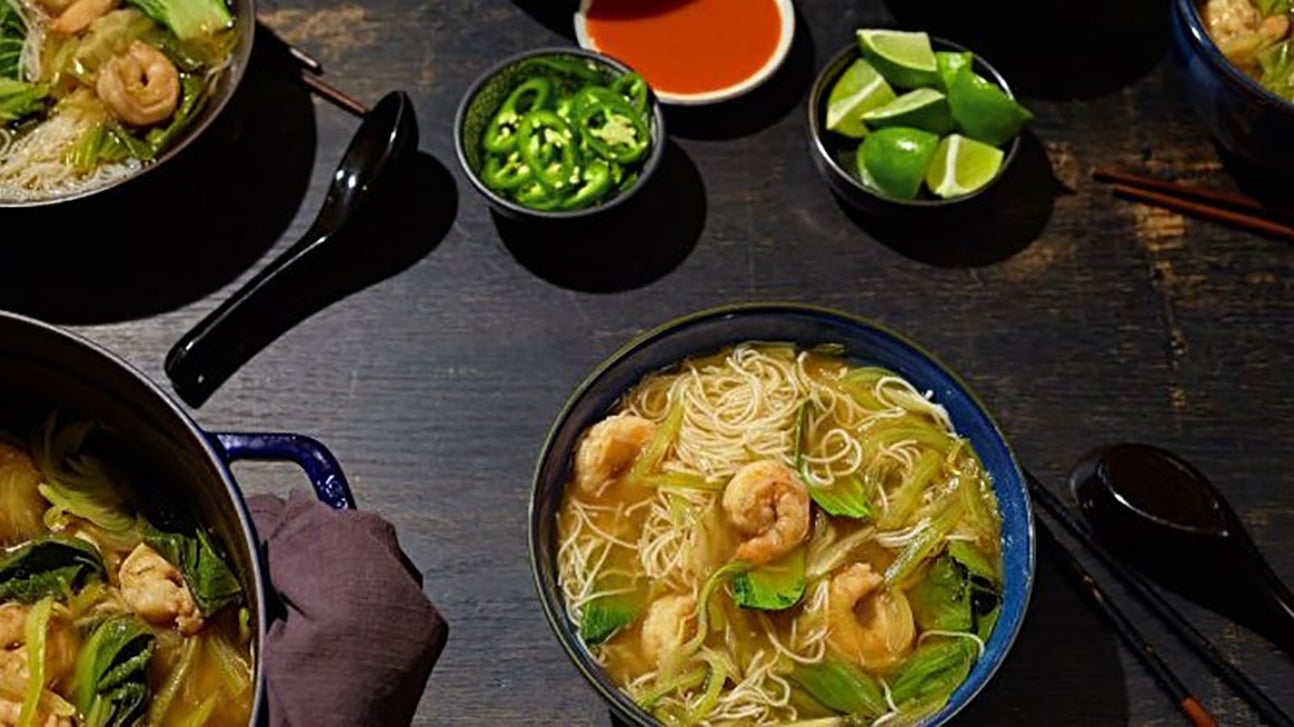
Shrimp make a nice addition to a bowl of brothy noodles, and they cook directly in the pot. For a more intense seafood flavor, start by making a shrimp stock as shown above, then use that in place of some or all of the chicken broth in our Easy Shrimp Pho recipe.
Kimchi Shrimp Fried Rice
Quick-cooking shrimp is also a perfect protein addition to fried rice. Even better if it has a kick from kimchi—but try adding some shrimp to whatever combo of ingredients you have on hand. Get our Shrimp Fried Rice recipe.


0 Commentaires